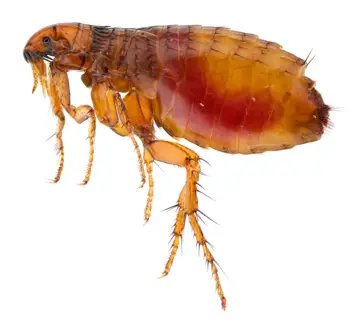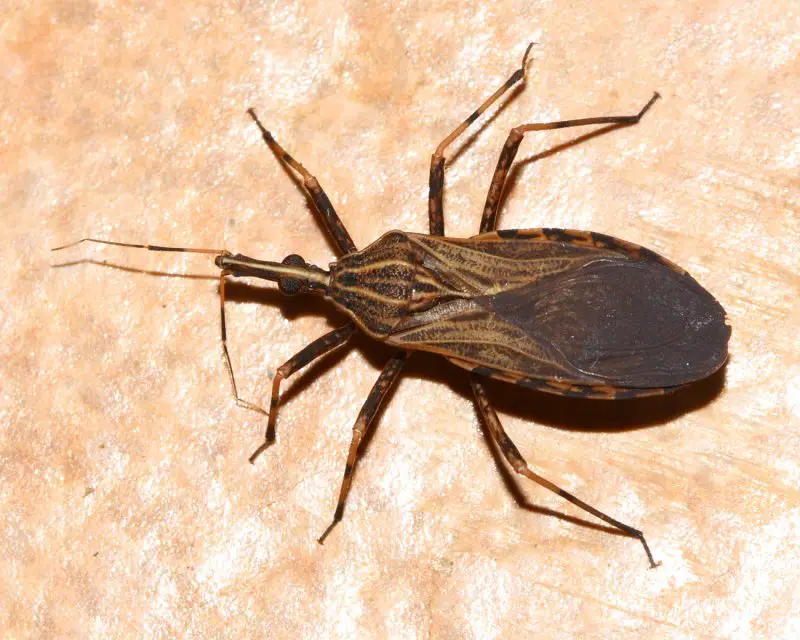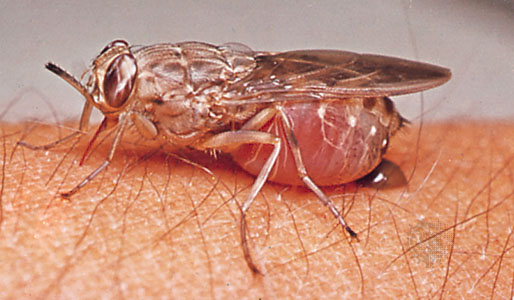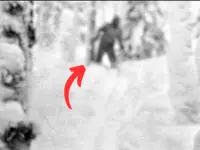4. Fleas

On their own fleas are not deadly and at worst have an annoying bite that causes some discomfort. However, it was fleas that spread the plague which killed up to 25 million people in the Middle Ages. The ‘black plague’ is caused by a bacteria called Yersinia pestis which is hosted primarily in rodents such as rats. Fleas act as a vector, biting the infected rodents then hopping onto a human where it may regurgitate blood into an open wound. If infected, victims may experience fever, headache and chills which may then lead to internal bleeding. Skin and other tissue may turn black, particularly fingers, toes and noses.
3. Triatominae

Another vector bug here that has the potential to cause serious lifelong medical issues. Triatoninae, also known as kissing bugs, feed on vertebrate blood and are found mostly in north and south America. These nasty little insects are vectors for Chagas disease, a tropical parasitic disease with a host of symptoms that change over a number of years. In the early stages the disease may exhibit symptoms common to many other ailments such as a mild fever, headache and swollen lymph nodes. Because of these broad symptoms it means early detection is often difficult. If left, the disease may not show any other symptoms for 10 to 30 years after the initial infection. Those infected may then exhibit an enlarged ventricle of the heart which can lead to heart failure. It is estimated that 7 to 8 million people are infected worldwide with Chagas disease with around 12,000 people dying from the disease each year.
2. Dorylus

Also known as driver ants, these terrifying hordes are found mostly in central and east Africa. This is a tough one to report on as there is very little solid data proving human deaths but the potential for harm is all too real.
If a driver ant hill is disturbed the ants can spew forth in their millions covering any incapacitated human or animal. Studies have shown that a swarm of Dorylus ants can strip a frog, flesh from bone in a matter of hours. This is where myth and reality start to blur. Stories tell of babies or injured adults left near Dorylus nests dying not of bites but of asphyxiation. The ants swarm the body so badly that they enter any orifice they can find, crawling down the throats of victims entering the lungs where they begin shredding the soft connective tissue, choking them to death.
1. Tse Tse Fly

Also known as tik-tik flies these nasty little buggers are another insect vector that causes thousands of deaths each year. Found throughout central Africa, these large vampiric flies feast on the blood of vertebrates. With each bite comes the potential for blood infected with trypanosomes to be spread to humans, causing what’s known as African trypanosomiasis or the human sleeping sickness. Once infected, initial symptoms include fever, joint pain, itchiness and swollen lymph nodes. If left untreated the disease can enter the central nervous system and disrupt sleep cycles causing periods of daytime drowsiness and nighttime wakefulness. After periods of general weakness, individuals may exhibit signs of psychosis such as aggressive behavior and irritability. Without adequate treatment the fatality rate of African Sleeping Sickness is extremely high. It is estimated that up to 500,000 people die from the disease each year.
—
So there’s our list of deadly insects that can kill you. Which bug made you squirm the most? Let us know on Twitter and Facebook.






